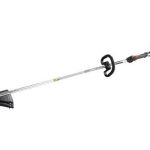
Compost has all the goodies lawns love including nutrients like nitrogen, phosphorus, and potassium as well as other trace elements not found in commercial fertilizer.
(Courtesy: Normanack at flickr)
Many of you who are looking for an alternative to harmful chemical fertilizers and herbicides may want to check out the advantages of spreading compost over your lawn. Compost is all natural and does not offer a threat to your pets and family. The only major disadvantages to the stuff are the mess and the smell. If you don’t mind the mess and your neighbors don’t mind the smell, then it is a great alternative to fertilizer.
Be aware that applying compost is not necessarily an easy task. Instead of using a spreader like you would when applying fertilizer, you will be pushing a wheelbarrow and using a shovel to disperse the compost. After that it is advised that you rake the grass to distribute the material evenly. There are other tools you can use to do the job. For example, you could use a compost wheel or peat spreader. However, these devices are hard to find, difficult to use, and you will have to refill them from time to time.
The key to using compost is not to use too much. The substance should be applied no more than a half-inch deep. Using more than that will bury and smother the grass blades and prevent sunlight from getting to them.
One of the best times to apply is the summer because it helps the lawn’s soil retain moisture during hot days and keeps the grass greener longer.
What makes compost so great is that it adds nutrients like nitrogen, phosphorus, and potassium to the soil as well as other trace elements not commonly found in commercial fertilizer. Other benefits include:
· It won’t burn your grass if you accidently use too much.
· It won’t stain concrete or brick walkways.
· It works fast.
Of course, you can make your own compost or you can buy it already made from any garden center.
Tools you will need for the job include:
· Gloves
· A shovel
· Wheel Barrow
Use the shovel to distribute the stuff on to the lawn. Use the rake to distribute the material evenly. The layer needs to be thin for all the reasons mentioned above and so that the nutrients can break down quickly. Not much compost should be showing once you finish raking.
Water the lawn for about 15 to 20 minutes about one week after applying the stuff. Take care of the lawn the way you normally would including watering, but don’t mow for about a week. This gives the compost seven to eight days to break down and for the nutrients to do their work.

Compost your lawn two-to-three times a year. It will look very lush and healthy and you won’t have to use fertilizer again.
(Courtesy: Lindley Library at flickr.com)
Experts suggest that you compost your lawn two to three times a year. Your lawn will be very lush and healthy as a result and you won’t ever have to use fertilizer again.







